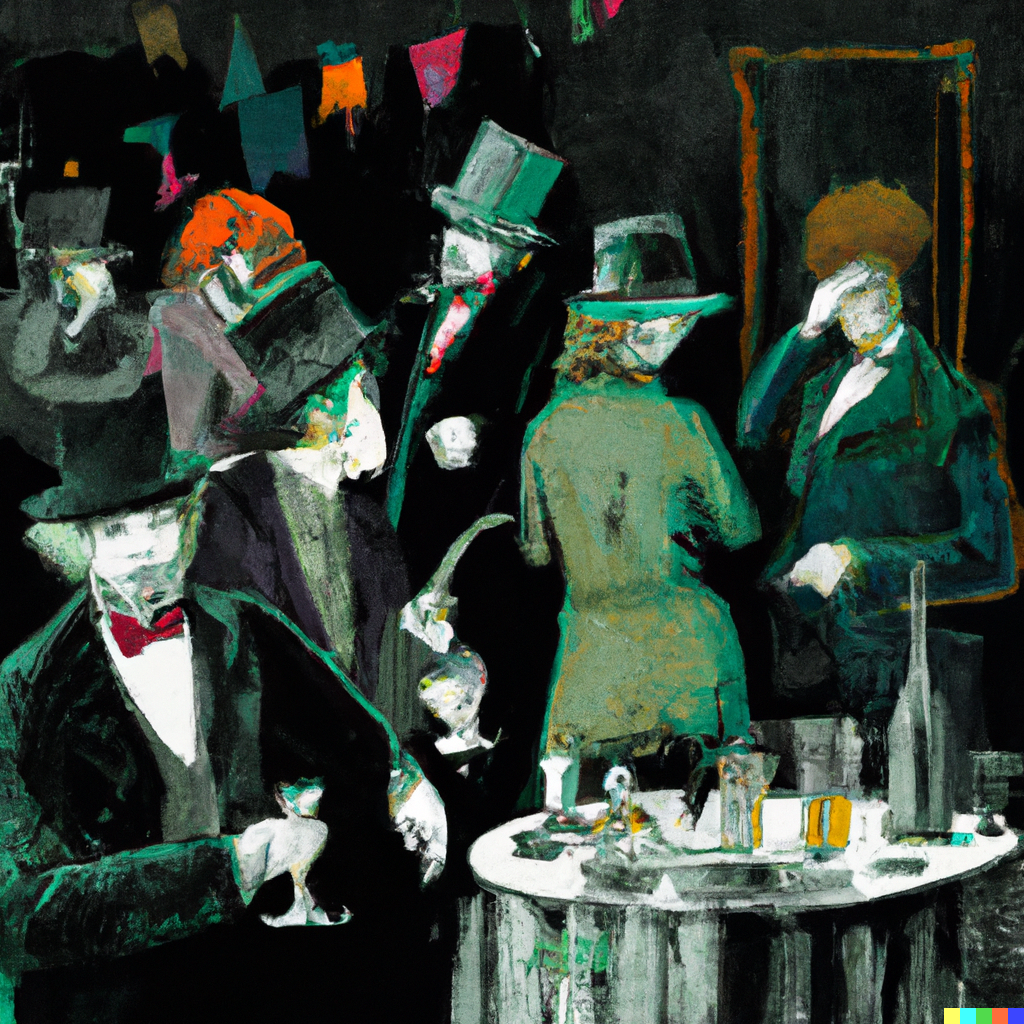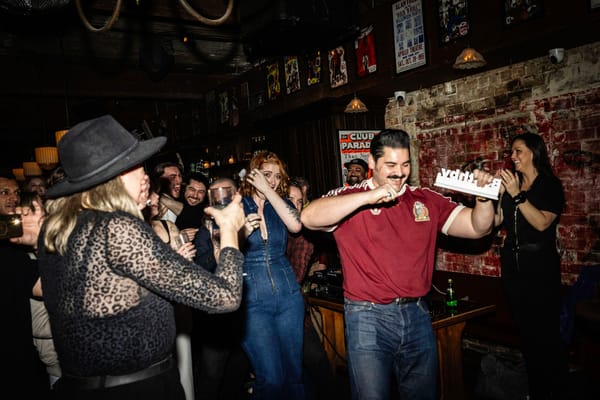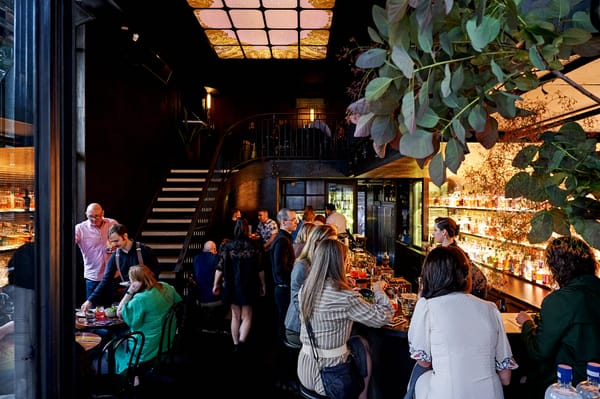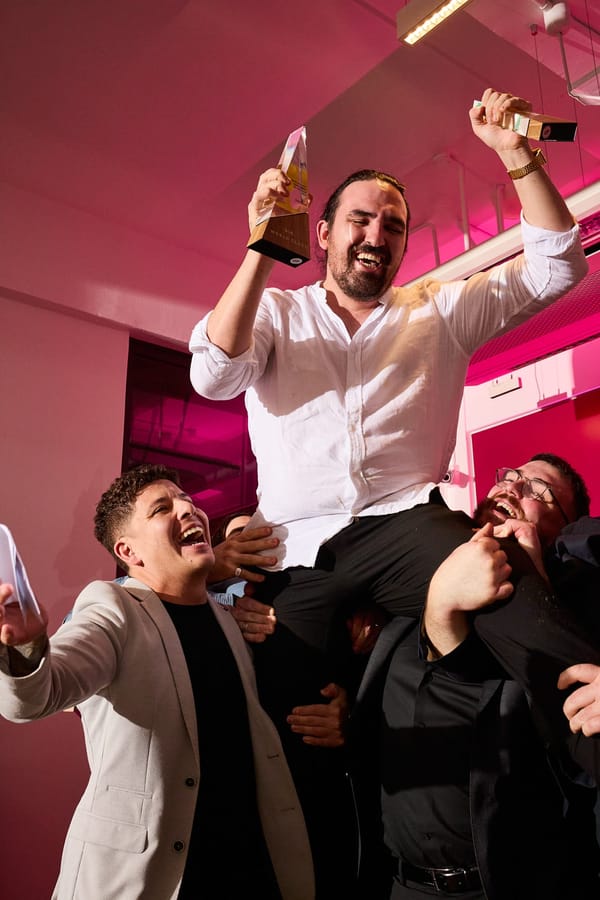This is the problem with non-alc ‘spirits’
Should you call a product absinthe if there's no alcohol in it?

A quick note up top: thanks to everyone who has subscribed to this newsletter recently, there’s now more than 870 Boothby members and a more than a few of you who are paid members — your support is amazing and much appreciated. If you’d like to become a paid member, you can help to support Boothby from $10 a month or $99 a year right here.
As we’re getting our ducks all in a row for the year ahead, I wanted to share you with a piece I wrote last year for another publication. Given that we’re in dry January, I thought it timely to give it another run. There’s a lot of money going into the non-alc space at the moment, and this month I’m reviewing a few different options, some of which I’m very much enjoying — I’ll have more on that next week. But as the piece below points out, there’s also a lot of stuff out there that is not, in my opinion, worth the money.
I’m old enough to remember when absinthe was something lurid; in the early 2000s, your bartending mates — those older than you — would tell stories at staffies about this green, high-proof spirit that could drive you insane like Van Gogh; if you drank too much of it, they said, you’d hallucinate; did you know it was illegal?
This is, of course, utter rubbish. Absinthe is a fine product that, whilst high in alcohol, won’t make you hallucinate. But in the days before access to information was as simple as asking Siri — in the days of Nokia and Ericsson and hello, Moto — you learned things from the people around you with experience.
But there was always some rubbish amid the good stuff; it’s the bar industry, after all — never let the truth get in the way of a good, boozy story, especially if it promises something illicit. You’re not telling stories about Starbucks at 3am in the morning, are you?
Some 20 years later things look a little different. For one, you can now buy a bottle of ‘absinthe’, drink the whole damn thing, and drive home — all perfectly legally.
Not so dangerous, is it?
Well, I say absinthe, but it’s not really absinthe, and here’s how: despite costing $45 for a 700ml bottle, this so-called absinthe is a non-alcoholic spirit. It’s just one of many products in Lyre’s range of non-alc spirits, part of a boom in options catering to those who would like to drink less alcohol, and to those who don’t want any alcohol at all.
Before I go on, a few things: one, the more delicious drinks that don’t contain alcohol but drink like ‘proper’ drinks, the better; two, I’m writing about this bottling because I think it’s a particularly egregious example of what I’m talking about; and three, yes, we all really do have better things to talk about than wailing on non-alcoholic spirits, but here we are. And for the record, the Lyre's Italian Orange is okay — some of what they do is good.
But absinthe, when made properly — which to my mind, is the French and Swiss way — is a beautiful spirit. It’s an old fashioned flavour. It’s a cooling drink — thanks to anise, one of its key botanicals — from a time before widespread refrigeration; it’s a proper grown-up drink as well. It’s in many of the best classic cocktail recipes. In short, it’s a bartender’s dream.
Despite this, that troubled reputation lingers around absinthe, and I suspect it won’t ever go away, no matter how many stories people like me write about it (honestly, there’s a whole internet of this stuff). It can be hard to change people’s minds when it comes to taste.
Which is why I think this non-alc stuff calling itself absinthe is a problem.
Putting aside the fact that there is no alcohol in the drink (and whether being labelled as a spirit is indeed fair and accurate), the non-alc version tastes nothing like true absinthe. When I tasted it, it was watery and thin with some hint of herbs; flavoured water, the consistency of Powerade. There wasn't anything spiritous about it. And I don’t know how it’s made, but it isn’t getting its colour from its botanicals alone. Take a look at some of the ingredients: water, sugar, glucose syrup, natural flavouring (absinthe), caramel sugar syrup, citric acid, and brilliant blue colour (E133) among them. Looking at those ingredients, one begins to understand why it doesn’t taste like the real thing, either.
The problem is, do consumers understand this isn’t the real thing? What if this is someone’s first taste of absinthe? If you ask me, the flavour profile doesn’t come close enough — like holding up a banana candy to a real, ripe banana, it’s a poor imitation of a delicious real thing. And if the general drinking public do think this is what absinthe tastes like, when they do try the real thing, they’re in for quite the surprise.
This is the problem with these products: they misrepresent what they are. I’ve got no problem with them bottling and selling those particular ingredients, I’ve got no problem with using food colouring to make something a particular colour if that’s what you want to do — just call it what it is. Flavoured water, less sweet cordial, whatever. The problem is they are poor imitations of the real thing and don’t drink like the real thing — yet make pretensions to be the real thing. Whether it’s intentional or not, it’s deceptive, and I think, detrimental to everyone drinking better.
Maybe I’d care less about what this bottle was called if I liked the taste, or if it more closely resembled the real deal. But when you label something as absinthe, it doesn’t matter if you sub-label it, asterisk it, or fine print it as non-alcoholic, if what’s within the bottle doesn’t match up to what the real stuff is, you’ve got a problem. I feel lied to.
Is this what the future of non-alcoholic drinking looks like? I don’t think so. For one, these pretend spirit products don’t drink like true spirits: there isn’t the mouthfeel, and without that hit of alcohol slowing down one’s sips, they drink more like expensive flavoured water. What does a 700ml bottle of water cost again?
Second, they’re not shelf stable — these things have use by dates. Once opened, you’re supposed to keep them in the fridge. I mean, you could drink a whole bottle in one go, but why?
Third, there are better alternatives out there that fill the function and don’t imitate for the sake of marketing. Kombucha is a delicious, fermented beverage, and packs in the flavour. Hit it with a little cream in a tall glass and you’ve got a Fizz you can sit on as long as any other Fizz.
And maybe this is the key to the whole debate. There is real promise in ready to drink non-alc cocktails. I like the approach that NON is taking, in that they’re not mimicking alcoholic products per se — they’re not making non-alcoholic wine. What they’re doing is making complex, interesting, and flavoursome non-alc drinks that drink the way alcoholic drinks do, with all the mouthfeel and sense of occasion that comes with that.
We learned to buy bottled cocktails from bars in the pandemic, and the best non-alcoholic drinks I’ve had are from bars. Bartenders understand texture and mouthfeel and occasion, all the things that make a good drink great. That’s where the interesting stuff to drink in the year ahead — whether it’s non-alc or not — will come from.





